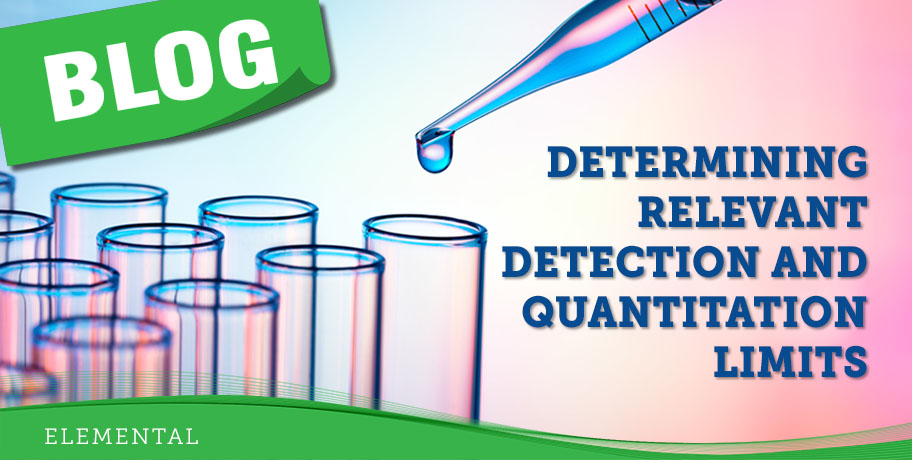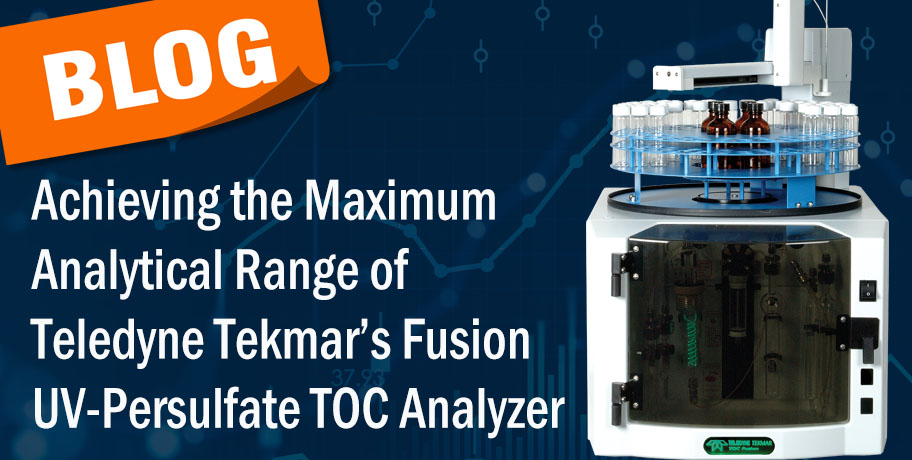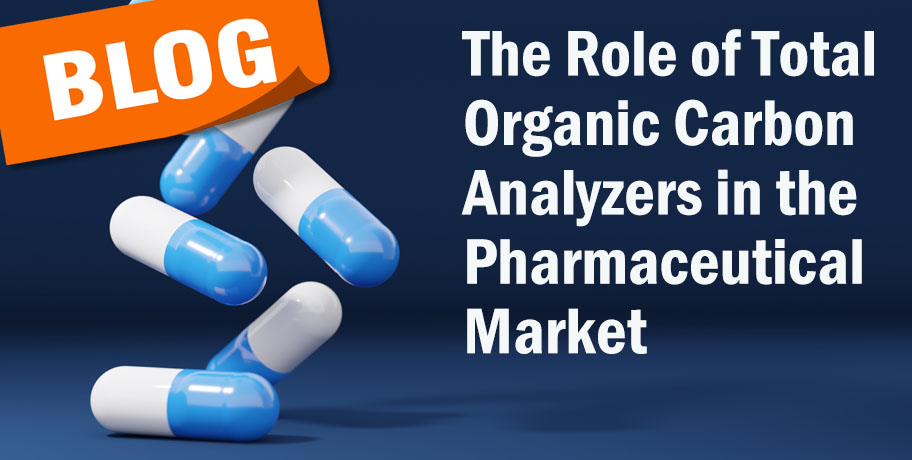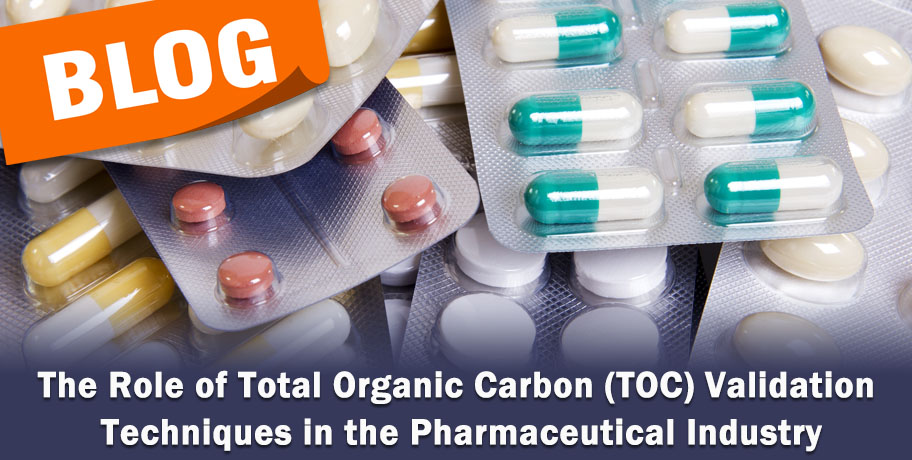Quantitative analysis determines the concentration of a target analyte present in a test sample. Detection limits and quantitation limits are used to express the ability of the instrumentation and the accuracy of the analytical results. This blog provides a brief overview on guidelines and references for achieving applicable detection limits and reliable quantitation limits.
Determining Relevant Detection and Quantitation Limits
Posted by Stephen Proffitt on Fri, Feb 09, 2024 @ 02:01 PM
Tags: TOC, Total Organic Carbon, Teledyne Tekmar, relevant detection, quantitation limits
Understanding the Importance of Cleaning and Blanking Procedures for the Fusion UV/Persulfate TOC Analyzer
Posted by Stephen Proffitt on Fri, Jun 30, 2023 @ 04:03 PM
A typical analysis schedule for the Fusion TOC analyzer starts with a cleaning procedure. The cleaning procedure confirms cleanliness of the system and will ensure low instrument background. Also, tracking cleaning procedure results from day to day will give an indication if any contamination issues may be occurring. It is imperative to have low background and no contamination to achieve superior low-level TOC results.
Achieving the Maximum Analytical Range of Teledyne Tekmar’s Fusion UV-Persulfate TOC Analyzer
Posted by Stephen Proffitt on Tue, Jun 27, 2023 @ 03:34 PM
The Fusion Total Organic Carbon (TOC) analyzer is equipped with TOC Teklink, a fully optimized graphical user interface.
This blog will demonstrate how Teklink helps to achieve the maximum analytical range for analysis.
To allow for quick startup, predetermined methodology has been set up for various sample types. For example, there are preset methods for analyzing pharmaceutical water, drinking water, and wastewater.
Maintaining Analytical Excellence with your Teledyne Tekmar Total Organic Carbon Analyzers
Posted by Stephen Proffitt on Thu, Apr 20, 2023 @ 01:50 PM
Preventive maintenance for analytical instrumentation should be scheduled and performed proactively. It is something that should not be put on the back burner. Establishing and adhering to a preventive maintenance schedule is beneficial in many ways:
- Reduces the risk of instrument failure
- Decreases unexpected downtime
- Increases laboratory productivity
- Extends instrumentation lifetime
- Saves money
Tags: TOC, Analytical Instrumentation
Total Organic Carbon (TOC) plays a vital role in today’s laboratory. There are two main types of TOC systems in today’s market: UV-Persulfate oxidation, and high temperature combustion oxidation. While these two systems have some areas of overlap, they offer different solutions for the laboratory.
Read more to learn about the differences between these two systems.
Tags: TOC, Laboratory Technology
The Role of Total Organic Carbon Analyzers in the Pharmaceutical Market
Posted by Tyler Trent on Wed, Mar 08, 2023 @ 04:54 PM
Total organic carbon (TOC) analyzers play a significant role in our pharmaceutical testing laboratories and manufacturing facilities. Water is a major excipient and solvent used in pharmaceutical manufacturing and cleaning processes. It must be tested regularly for TOC. TOC analyzers are used globally to measure the amount of organic carbon that is present in water and in the equipment for cleaning validation. TOC is also used to test water sources for injection and has other uses within the pharmaceutical landscape.
Tags: TOC, Pharmaceutical Analysis
Conquer the Worst Enemy of Low-Level Total Organic Carbon Results
Posted by Stephen Proffitt on Fri, Feb 17, 2023 @ 04:40 PM
What are the three worst enemies of low-level total organic carbon (TOC) analysis? Contamination, contamination, and contamination. Why stated three times? Because contamination can come from at least three different sources. The top three ways contamination can be inadvertently introduced into a TOC analyzer are reagents, laboratory glassware, and samples.
Tags: TOC, Total Organic Carbon
The Role of Total Organic Carbon (TOC) Validation Techniques in the Pharmaceutical Industry
Posted by Tyler Trent on Wed, May 18, 2022 @ 04:03 PM
Pharmaceutical production entails strict quality control and precise analytical testing methods. The United States Pharmacopeia (USP), European Pharmacopeia (EP) and Japanese Pharmacopeia (JP) have promoted TOC analysis as the analytical technique to verify that cleaning validation, purified water (PW) and water for intravenous injection (WFI) meet the high standards of the pharmaceutical industry.
Tags: TOC, Cleaning Validation, Pharmaceutical Analysis, Water for Injection
Total Organic Carbon (TOC) is defined as the amount of carbon bound in an organic compound and is often used as a non-specific indicator of water quality or cleanliness of pharmaceutical manufacturing equipment.
Tags: TOC
Teledyne Tekmar recently released a new guide that compares Total Organic Carbon analysis techniques. The guide provides important details for users and recommends the best instrument for your specific application. TOC analysis, which is used in a variety of labs, is a technique employed to determine water cleanliness and purity. It is a required test by the United States Pharmacopoeia (USP), European Pharmacopoeia (EP) and Japanese Pharmacopoeia (JP), and is frequently used to monitor wastewater, soils and drinking water safety.
Tags: TOC








